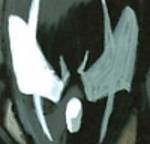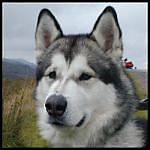If anything exists on this I haven't found it...
I'm looking for techniques to simulate damage a fighter or bomber may have taken from AA or other aircraft.
As I kid I use to heat a needle and poke holes to make "bullet" holes.
As I'm overdoing the weathering on to this Stuka tank buster I'm experimenting with it popped into my head that something was probably shooting back as this plane dived at a tank with those cannons, right?
Any advice or feedback would be greatly appreciated!
World War II
Discuss WWII and the era directly before and after the war from 1935-1949.
Discuss WWII and the era directly before and after the war from 1935-1949.
Hosted by Rowan Baylis
simulating AA and dogfight damage

discordian

Joined: May 28, 2009
KitMaker: 239 posts
AeroScale: 95 posts

Posted: Wednesday, July 08, 2009 - 06:17 AM UTC
stugiiif

Joined: December 13, 2002
KitMaker: 1,434 posts
AeroScale: 403 posts

Posted: Wednesday, July 08, 2009 - 02:10 PM UTC
The technique I Used in the past is similar to your Childhood flight of fancy. But the first step I do is thin the plastic before ripping into it from the direction of fire. I usually use a number 11 blade in twisting and stabbing motion. HTH

mvfrog

Joined: August 25, 2008
KitMaker: 369 posts
AeroScale: 104 posts

Posted: Wednesday, July 08, 2009 - 06:44 PM UTC
I agree. I think the most important thing at the start is to thin the plastic from the inside and then do the damage. I'd take a look at a lot of combat damage. and then go ahead. Think , also, about the way the color comes off, leaving bare metal in a definite pattern at the 'wound.' There's a guy over on Dioramas that does some fantastic battle damage on modern vehicles. I can't remember his name (Crowder or something like that. His avatar is a picture of him and his girlfriend). I bet he could give you some great advice on how metal behaves when damaged and burned,
Matt
I found him: Martyn Crowther. Does nice work
Matt

I found him: Martyn Crowther. Does nice work

Kornbeef

Joined: November 06, 2005
KitMaker: 1,667 posts
AeroScale: 1,551 posts

Posted: Wednesday, July 08, 2009 - 08:48 PM UTC
Yes definately thin the plastic with a dremel or similar, practice on old kit parts, the biggest worry apart from grinding your self is heat. Dont grind hard in one area too long.
To keep an eye on the thinness and the regularity of it, simply hold it up to the light and check the evenness that way, possibly finishing with a sanding.
Dont forget internal structures too, ribs, spars wiring etc can all be knocked up quite easily.
Another thing to remember s wind effect, a damaged section may wel peel back outwards as the passing air at high speed wouls bend it back and bullets/shells usually exit as wel as enter the skin, so you could punch into one sie of a wing and out the other remembering of course to miss vital things like tanke and ammo. If I remember I will post some pics later of a C47 I'm working on as a back project and a D VII which although fabric the same basic principal applies.
Another option for scale peeled panels is beer/soda can, that can be quite effective, ripples and twists well with practice and is stronger than plastic.
Hope this helps
Keith
To keep an eye on the thinness and the regularity of it, simply hold it up to the light and check the evenness that way, possibly finishing with a sanding.
Dont forget internal structures too, ribs, spars wiring etc can all be knocked up quite easily.
Another thing to remember s wind effect, a damaged section may wel peel back outwards as the passing air at high speed wouls bend it back and bullets/shells usually exit as wel as enter the skin, so you could punch into one sie of a wing and out the other remembering of course to miss vital things like tanke and ammo. If I remember I will post some pics later of a C47 I'm working on as a back project and a D VII which although fabric the same basic principal applies.
Another option for scale peeled panels is beer/soda can, that can be quite effective, ripples and twists well with practice and is stronger than plastic.
Hope this helps
Keith
DonSS3

Joined: July 27, 2006
KitMaker: 92 posts
AeroScale: 91 posts

Posted: Thursday, July 09, 2009 - 02:18 AM UTC
And don't overdo it! A couple of hits here and there is usually enough to give the effect you want. You probably know this already, too, but don't do the "stitching" of bulletholes as in a 1940s Hollywood film...
stonar

Joined: August 15, 2008
KitMaker: 337 posts
AeroScale: 309 posts

Posted: Thursday, July 09, 2009 - 04:10 AM UTC
I read an article where someone had done this by replacing panels to be damaged with foil and then holing that. I've never done it myself but it looked great. If I can find it I'll post a linky thing.
Steve
Steve

mvfrog

Joined: August 25, 2008
KitMaker: 369 posts
AeroScale: 104 posts

Posted: Thursday, July 09, 2009 - 05:25 AM UTC
I recently thinned some plastic on my F-105D kit. The Dremel is too 'crude' and fast to do this without heat, etc; it would be a bit unmanageable for this. I took sanding sticks and just worked the plastic down, and it worked very well. It was easily controllable by the average idiot (me), and produced excellent results.
Also, I found a product at an arts supply store that will allow you to print on foil from the average ink jet printer. I t would be possible to print 'skins' and panelling for your model, then open 'em up for the battle damage. This can be done in full color. So, if you put the color of the panel, including the burn marks or whatever you wanted, including 'replacement panel' lines ( for work done on the aircraft prior to this damage, you would have a pre designed part ready to open up. If anyone would like to hear more about this, let me know and I'll give the product name, and more about how it works, etc. I just bought it, and haven't used it yet, but this is my best estimate of the use. It can be used on many different surfaces (cloth, etc. as long as it will go on a backing sheet, and then through the inkjet).
Matt
Also, I found a product at an arts supply store that will allow you to print on foil from the average ink jet printer. I t would be possible to print 'skins' and panelling for your model, then open 'em up for the battle damage. This can be done in full color. So, if you put the color of the panel, including the burn marks or whatever you wanted, including 'replacement panel' lines ( for work done on the aircraft prior to this damage, you would have a pre designed part ready to open up. If anyone would like to hear more about this, let me know and I'll give the product name, and more about how it works, etc. I just bought it, and haven't used it yet, but this is my best estimate of the use. It can be used on many different surfaces (cloth, etc. as long as it will go on a backing sheet, and then through the inkjet).
Matt


discordian

Joined: May 28, 2009
KitMaker: 239 posts
AeroScale: 95 posts

Posted: Thursday, July 09, 2009 - 09:11 AM UTC
cool - thanks for all the feedback . Unfortunately this is already painted and such so thinning from the inside is not possibly...
Not to say I can't try anyway.
This model is for learning new tecniques and isn't a "showpiece".
Maybe I can go with a ripped up wingtip (just a little) to start with and a little collateral damage on the appropriate side of the fuselage - some small burn marks.
Not to say I can't try anyway.
This model is for learning new tecniques and isn't a "showpiece".
Maybe I can go with a ripped up wingtip (just a little) to start with and a little collateral damage on the appropriate side of the fuselage - some small burn marks.
TAFFY3

Joined: January 21, 2008
KitMaker: 2,531 posts
AeroScale: 38 posts

Posted: Thursday, July 09, 2009 - 11:20 AM UTC
Quoted Text
Hello Matt, I disagree with your statement about a Dremel being too crude. I've used one many times to thin plastic on a 1/48th scale aircraft to create battle damage. I used a small round ball shaped cutting bit on low speed setting. Scott,One thing about battle damage you have to be careful of is what type of material the part of the aircraft is supposed to represent ( metal, wood, or cloth for example). I've seen modelers put paint chips on cloth covered ailerons and the wooden fuselage of a Mosquito. I recently thinned some plastic on my F-105D kit. The Dremel is too 'crude' and fast to do this without heat, etc; it would be a bit unmanageable for this. I took sanding sticks and just worked the plastic down, and it worked very well. It was easily controllable by the average idiot (me), and produced excellent results.
Also, I found a product at an arts supply store that will allow you to print on foil from the average ink jet printer. I t would be possible to print 'skins' and panelling for your model, then open 'em up for the battle damage. This can be done in full color. So, if you put the color of the panel, including the burn marks or whatever you wanted, including 'replacement panel' lines ( for work done on the aircraft prior to this damage, you would have a pre designed part ready to open up. If anyone would like to hear more about this, let me know and I'll give the product name, and more about how it works, etc. I just bought it, and haven't used it yet, but this is my best estimate of the use. It can be used on many different surfaces (cloth, etc. as long as it will go on a backing sheet, and then through the inkjet).
Matt
 Al
Al |







